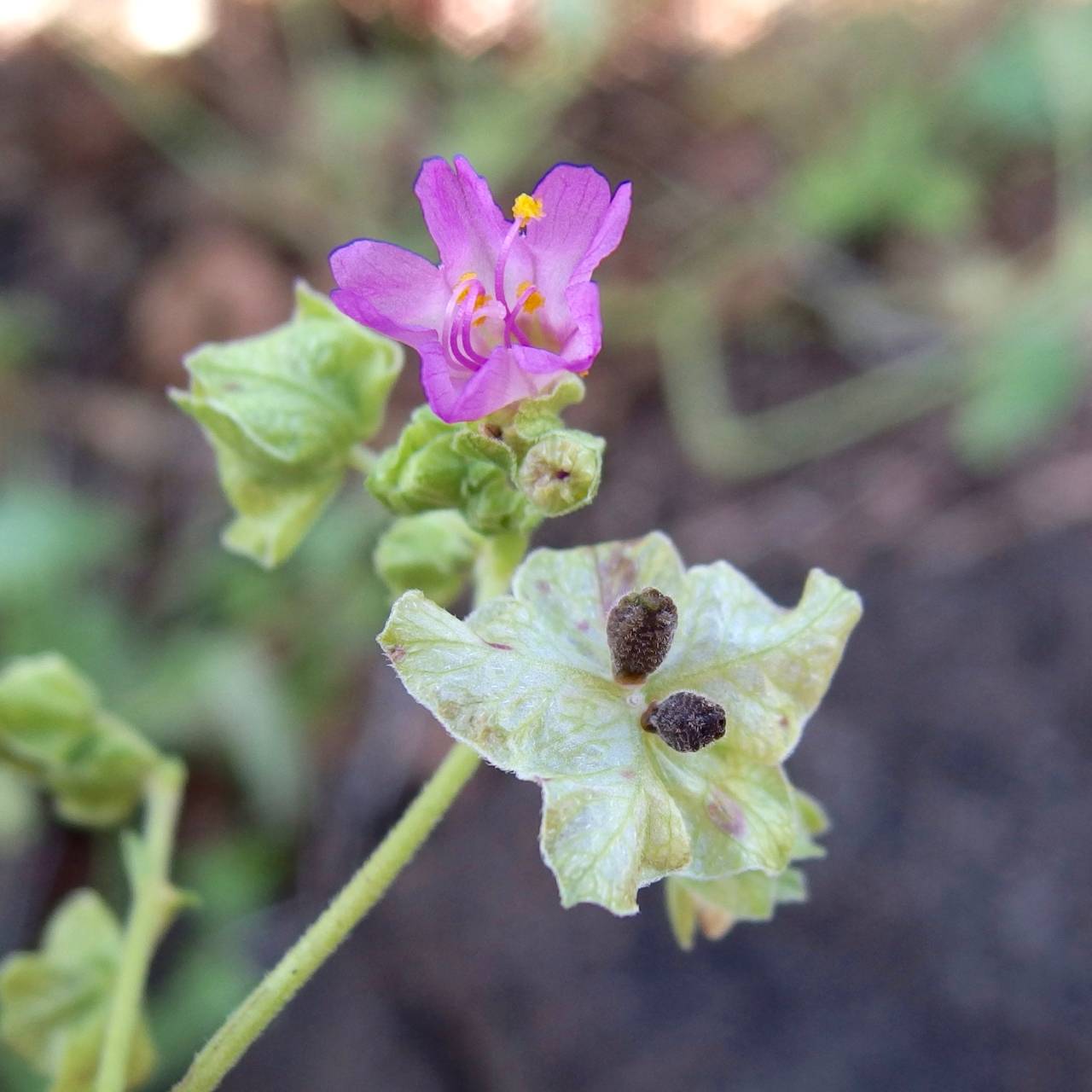
|
Family: Nyctaginaceae |
Herbs, perennial [annual], often suffrutescent, glabrous or pubescent, sometimes viscid; taproots slender and ropelike to swollen and tuberous. Stems erect to decumbent, unarmed, without glutinous bands on internodes. Leaves petiolate or sessile, ± equal in each pair; blade thin to thick and fleshy, base ± symmetric. Inflorescences terminal and axillary, terminating in pedunculate involucres subtending 1-16 flowers, usually cymose, sometimes consisting of single involucre in leaf axil; bracts persistent, 5, connate or, rarely, distinct, ± ovate, forming weakly to strongly accrescent, herbaceous to papery involucre. Flowers bisexual, chasmogamous and/or cleistogamous; cleistogamous perianth small dome atop basal portion; chasmogamous perianth radially symmetric or slightly bilaterally symmetric, campanulate to funnelform, constricted beyond ovary, tube gradually to abruptly expanded, limb 5-lobed; stamens 3-6, exserted; styles exserted beyond stamens; stigmas capitate. Fruits radially symmetric, with (4-)5 round or angular ribs separated by usually broad sulci, or ribs not well defined or not evident, obovoid, ellipsoid, or nearly globose, smooth or tuberculate, stiffly coriaceous, glabrous or pubescent, without glands. Mirabilis is the most speciose genus of the Nyctaginaceae. A. Heimerl (1934c), in part adapting J. D. Hooker´s (1880) treatment, recognized six sections, five of which occur in the flora. P. C. Standley (1918) recognized segregate genera within the alliance, collapsing them into a broadly circumscribed Mirabilis in 1931. Species-level taxonomy is often equivocal because of the lack of distinguishing reproductive characteristics among forms that are, overall, morphologically and ecologically different. Problems are exacerbated in sect. Oxybaphus by autogamy, xenogamy, perennial nature, and rather high chromosome numbers (R. W. Cruden 1973; R. Spellenberg 1998). Some species are used widely for dyes, cosmetics, food, and medicine (G. M. Hocking 1997; D. J. Mabberly 1997).
Cal corolloid, funnelform, ±5-lobed; stamens 3-5; stigma capitate; anthocarp indurated, 5-angled or -ribbed; involucre well developed, 5-lobed, subtending 1-5 fls; perennial herbs (sometimes woody at the base) with opposite lvs and terminal, cymose infls. 60, New World. Gleason, Henry A. & Cronquist, Arthur J. 1991. Manual of vascular plants of northeastern United States and adjacent Canada. lxxv + 910 pp. ©The New York Botanical Garden. All rights reserved. Used by permission. |
This project was made possible in part by the Institute of Museum and Library Services [MG-70-19-0057-19].
Powered by Symbiota



